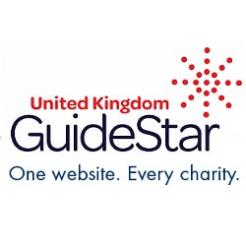For a service that was intended to promote transparency, the ongoing GuideStar saga is depressingly confusing and opaque, says Tania Mason.
The GuideStar story has more twists and turns than a Formula One track. The latest development, that Wilmington Group has bought the free public website and the database that powers it, from the administrators, poses more questions than it answers.
On 22 October, GuideStar International issued a press release stating that it had “reacquired the GuideStar UK programme” and that “as a result, the GuideStar UK programme, encompassing the database and the GuideStar UK website, will continue uninterrupted”. Tinsley Goad, CEO of GuideStar International, said at the time: “We look forward to continuing to deliver the GuideStar UK website and its database of registered charities as an important public service.”
So the announcement last week from Wilmington Group plc, that it had in fact acquired the website and the database, was ever so slightly confusing, and not just to me. GuideStar International also seemed bewildered – a spokeswoman told me on Friday that the website still belonged to them, though a subsequent email from her over the weekend glossed over the small issue of ownership. The administrators were no help either: “I am simply not going to get involved in answering these questions,” said Anthony Kent of Maidment Judd.
Wilmington tried to clarify, saying that it had bought the physical website and the database but that GuideStar still owned the brand. But what on earth does this mean? The brand is the website and the database, surely? That’s like saying eBay will still be a brand but won’t have an online shopping facility.
There are many other details that have not yet seen the light of day, and seem unlikely ever to do so. The Directory of Social Change refused to say how much it paid for GuideStar Data Services back in March. GuideStar International never said how much it paid to reacquire the GuideStar UK programme back in October. And Wilmington certainly aren’t saying how much it paid for the same assets that GuideStar International seemed to think it had acquired. Interesting that organisations like GuideStar and the Directory of Social Change, usually such champions of transparency, have been so opaque about their involvement in the whole sorry venture.
In fact, the only number that isn’t mired in a veil of secrecy is the £2.9m of taxpayers’ money that the government ‘invested’ in setting up GuideStar in 2003/4.
It’s impossible to avoid the implication that Wilmington bought the database in order to remove from the market a major competitor selling information on charities. If this is correct, then the existing GuideStar website will quietly close down at some point and presumably GuideStar International will replace it with a new one based on its standard model featuring just raw Charity Commission data, augmented by extra information entered by charities themselves.
Of course, there are plenty of people who can’t understand why we need GuideStar at all, now that we have the Charity Commission’s all-singing, all-dancing online register. But now that the Commission is facing budget cuts on an unprecedented scale, it may not make economical sense for it to continue to provide that service in-house. One suspects we haven’t seen the checkered flag waved on the GuideStar journey just yet.
Tania Mason is group editor of Civil Society Media









